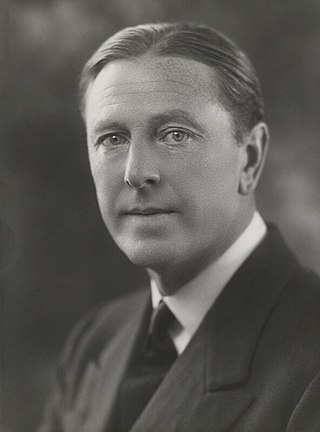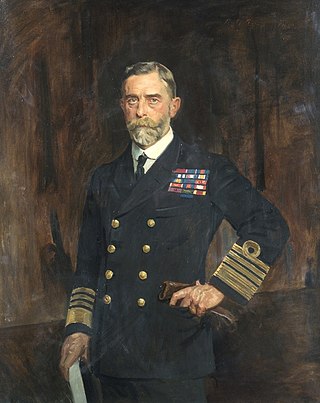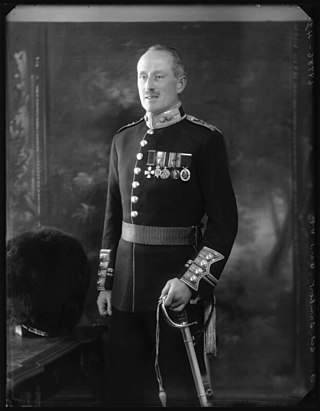Baron Hayter, of Chislehurst in the County of Kent, is a title in the Peerage of the United Kingdom. It was created in 1927 for the businessman Sir George Chubb, 1st Baronet. He had already been created a baronet of Newlands in the Baronetage of the United Kingdom in 1900. Chubb was chairman and managing director of the firm Chubb and Sons Lock and Safe Co Ltd, established by his grandfather Charles Chubb in the early 19th century. "Hayter" was the maiden name of George Hayter Chubb's mother, and was selected in preference to "Chubb", as it was not considered appropriate for names of corporations to be attributed to members of the House of Lords. He was succeeded by his son, the second baron. He was managing director of Chubb and Sons Lock and Safe Co Ltd. His son, the third baron, was managing director and chairman of Chubb and Sons Lock and Safe Co Ltd and also served as deputy chairman of the House of Lords from 1981 to 1995. As of 2014 the titles are held by the latter's son, the fourth baron, who succeeded in 2003.
Baron Swaythling, of Swaythling in the County of Southampton, is a title in the Peerage of the United Kingdom. It was created in 1907 for the British Jewish Liberal politician, banker and philanthropist, Sir Samuel Montagu, 1st Baronet. He had already been created a Baronet, of South Stoneham House in the County of Southampton and of Kensington Palace Gardens in the County of London, in 1894. As of 2010, the titles are held by his great-great-grandson, the fifth Baron, who succeeded his father in 1998.

Bolton Meredith Eyres-Monsell, 1st Viscount Monsell, was a British Conservative Party politician who served as Chief Whip until 1931 and then as First Lord of the Admiralty.

Sir Ronald Hibbert Cross, 1st Baronet, was a British politician and diplomat. He served as Governor of Tasmania 1951-58.
This is a list of people who have served as Lord Lieutenant of Hampshire. Since 1688, all the Lords Lieutenant have also been Custos Rotulorum of Hampshire. From 1889 until 1959, the administrative county was named the County of Southampton.
This is an incomplete list of people who served as Lord Lieutenant of Denbighshire in Wales. After 1733, all Lord Lieutenants were also Custos Rotulorum of Denbighshire. The office was abolished on 31 March 1974, being replaced by the Lord Lieutenant of Clwyd.

Admiral of the Fleet Sir Charles Edward Madden, 1st Baronet,, was a Royal Navy officer who served during the First World War as Chief of the Staff to Sir John Jellicoe in the Grand Fleet from 1914 to 1916 and as Second-in-Command of the fleet under Sir David Beatty from 1916 to 1919. He was Commander-in-Chief of the Atlantic Fleet after the war and served as First Sea Lord in the late 1920s. In that role, in order to avoid an arms race, he accepted parity with the United States in the form of 50 cruisers defending his position on the basis that he only actually had 48 cruisers anyway.

There have been two baronetcies created for persons with the surname Goschen, both in the Baronetage of the United Kingdom. One creation is extant as of 2017.

This is a list of Sheriffs of Derbyshire from 1567 until 1974 and High Sheriffs since.

Lieutenant-Colonel Amelius Richard Mark Lockwood, 1st Baron Lambourne, was a British soldier and politician.
The high sheriff is the oldest secular office under the Crown and is appointed annually by the Crown. The High Sheriff of Norfolk was originally the principal law enforcement officer in Norfolk and presided at the assizes and other important county meetings. Most of the responsibilities associated with the post have been transferred elsewhere or are now defunct, so that its functions are now largely ceremonial. There was a single high sheriff serving the two counties of Norfolk and Suffolk until 1576.

Sir Albert Lambert Ward, 1st Baronet was a volunteer soldier in the Territorial Army and a Conservative Party politician in the United Kingdom.
The Philipson-Stow Baronetcy, of Cape Town in the Colony of Cape of Good Hope, and Blackdown House in Lodsworth in the County of Sussex, is a title in the Baronetage of the United Kingdom. It was created on 26 July 1907 for the diamond magnate Frederic Philipson-Stow. Born Frederic Stow, he had assumed by Royal licence the additional surname of Philipson in 1891.
The Chief Royal Engineer (CRE) is the official head of the Corps of Royal Engineers of the British Army.

The 1929 Dissolution Honours List was issued on 28 June 1929 at the advice of the outgoing Prime Minister, Stanley Baldwin.
Brigadier General William Denman Croft, was a British Army officer. He served as a brigadier general in the British Army in the First World War, and afterwards in India. He was one of seven British officers to be awarded the Distinguished Service Order four times in the First World War. He was Home Guard commander in Cornwall during the Second World War.








